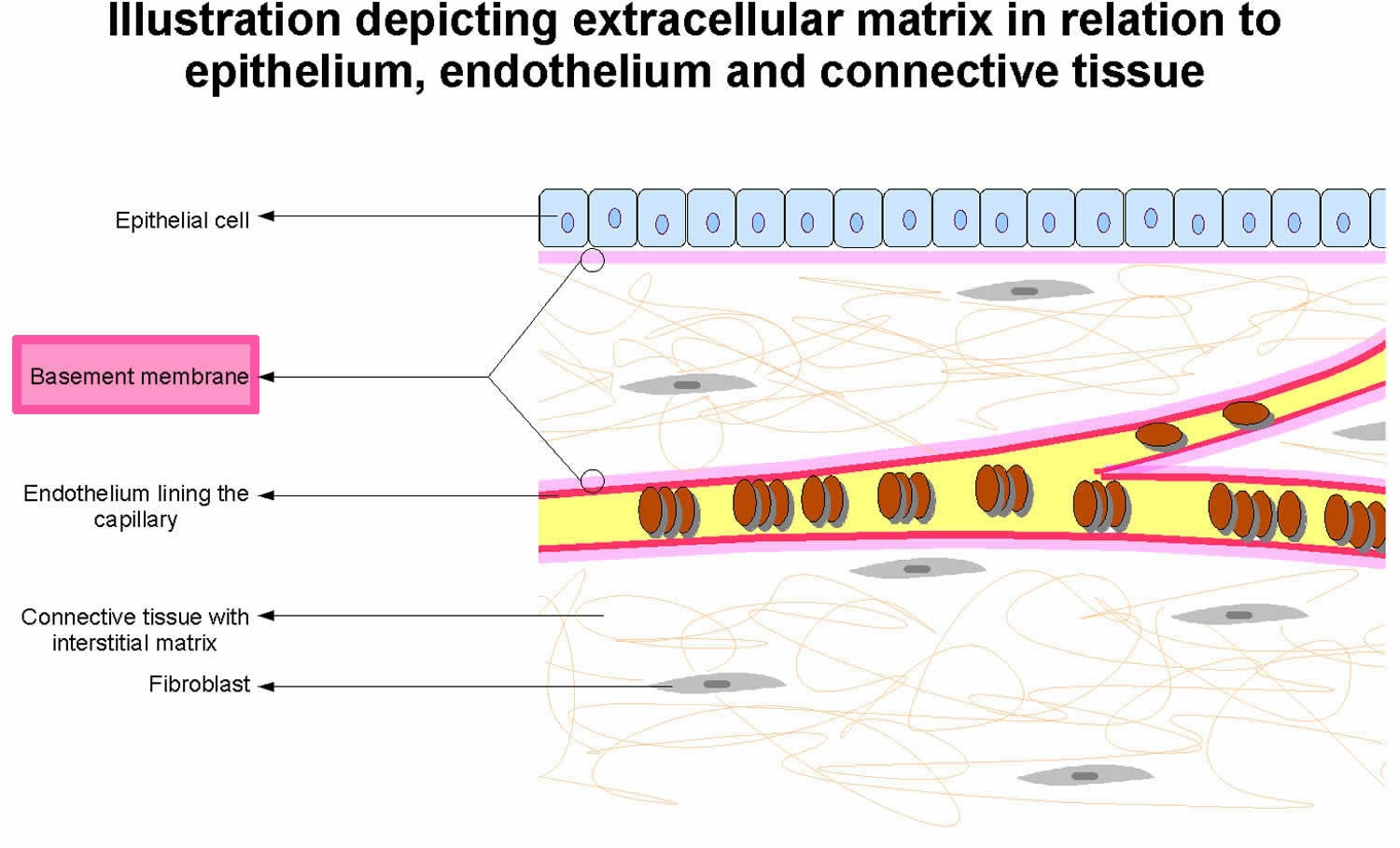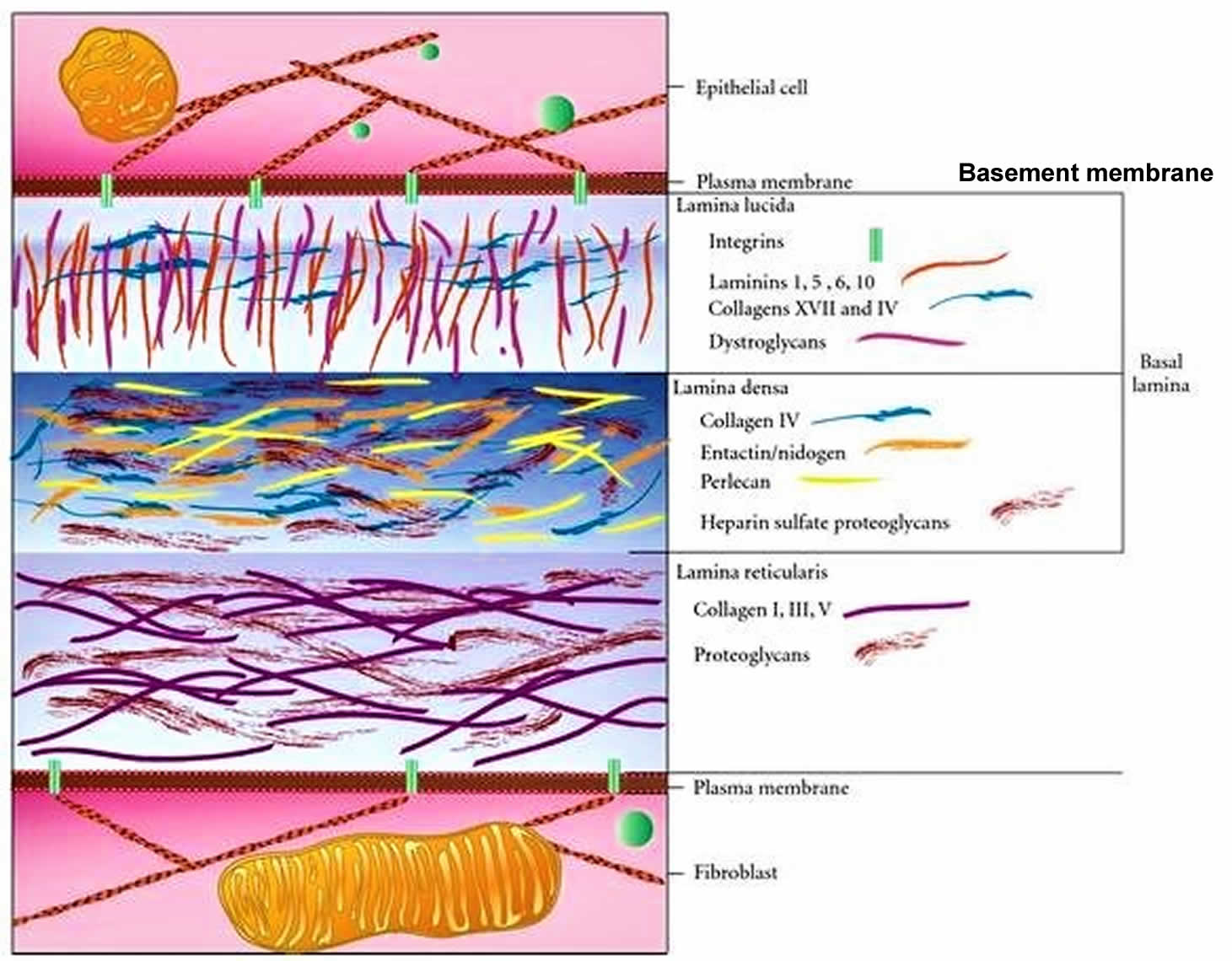Basement membrane
The basement membrane is a structure that supports overlying epithelial or endothelial cells. Basement membrane is a thin extracellular layer that commonly consists of two layers, the basal lamina (lamina densa) and reticular lamina. The basal lamina (lamina = thin layer, about 30–70 nanometers in thickness) is closer to—and secreted by—the epithelial cells. The basal lamina (lamina densa) contains proteins such as laminin and collagen, as well as glycoproteins and proteoglycans. The laminin molecules in the basal lamina adhere to integrins in hemidesmosomes and thus attach epithelial cells to the basement membrane. The reticular lamina is closer to the underlying connective tissue and contains proteins such as collagen produced by connective tissue cells called fibroblasts. In addition to collagen, this supportive matrix contains intrinsic macromolecular components. In addition to attaching to and anchoring the epithelium to its underlying connective tissue, basement membranes have other functions. They form a surface along which epithelial cells migrate during growth or wound healing, restrict passage of larger molecules between epithelium and connective tissue, and participate in filtration of blood in the kidneys.
Figure 1. Basement membrane structure
Basement membrane function
The primary function of the basement membrane is to anchor down the epithelium to its loose connective tissue underneath. This is achieved by cell-matrix adhesions through cell adhesion molecules (CAMs).
The basement membrane acts as a mechanical barrier, preventing malignant cells from invading the deeper tissues 1. Early stages of malignancy that are thus limited to the epithelial layer by the basement membrane are called carcinoma in situ.
The basement membrane is also essential for angiogenesis (development of new blood vessels). Basement membrane proteins have been found to accelerate differentiation of endothelial cells 2.
Basement membrane also plays an important role in glomerular filtration in the kidney.
Noncollagenous domain basement membrane collagen type IV is autoantigen (target antigen) of autoantibodies in the autoimmune disease Goodpasture’s syndrome.
References- Liotta, L., Tryggvason, K., Garbisa, S. et al. Metastatic potential correlates with enzymatic degradation of basement membrane collagen. Nature 284, 67–68 (1980) doi:10.1038/284067a0 https://www.nature.com/articles/284067a0
- Role of laminin and basement membrane in the morphological differentiation of human endothelial cells into capillary-like structures. Y Kubota, H K Kleinman, G R Martin, T J Lawley. The Journal of Cell Biology Oct 1988, 107 (4) 1589-1598; DOI: 10.1083/jcb.107.4.1589 http://jcb.rupress.org/content/107/4/1589.abstrac






